For thousands of years, the night sky has sparked the human imagination–inspiring myths, legends, and traditions. Today is no different, despite artificial light making dark skies harder to find. Thanks to vast tracts of wilderness and desert devoid of light pollution, stargazing in Washington is especially fantastic, drawing amateur astronomers, photographers, and those who are just inspired by the magic of bright stars on a dark night.
No matter where you’re headed, handy tools can help you make the most of your stargazing adventures. Find information on light pollution, meteor showers, and more at CalSky and use Clear Sky Chart for viewing forecasts.
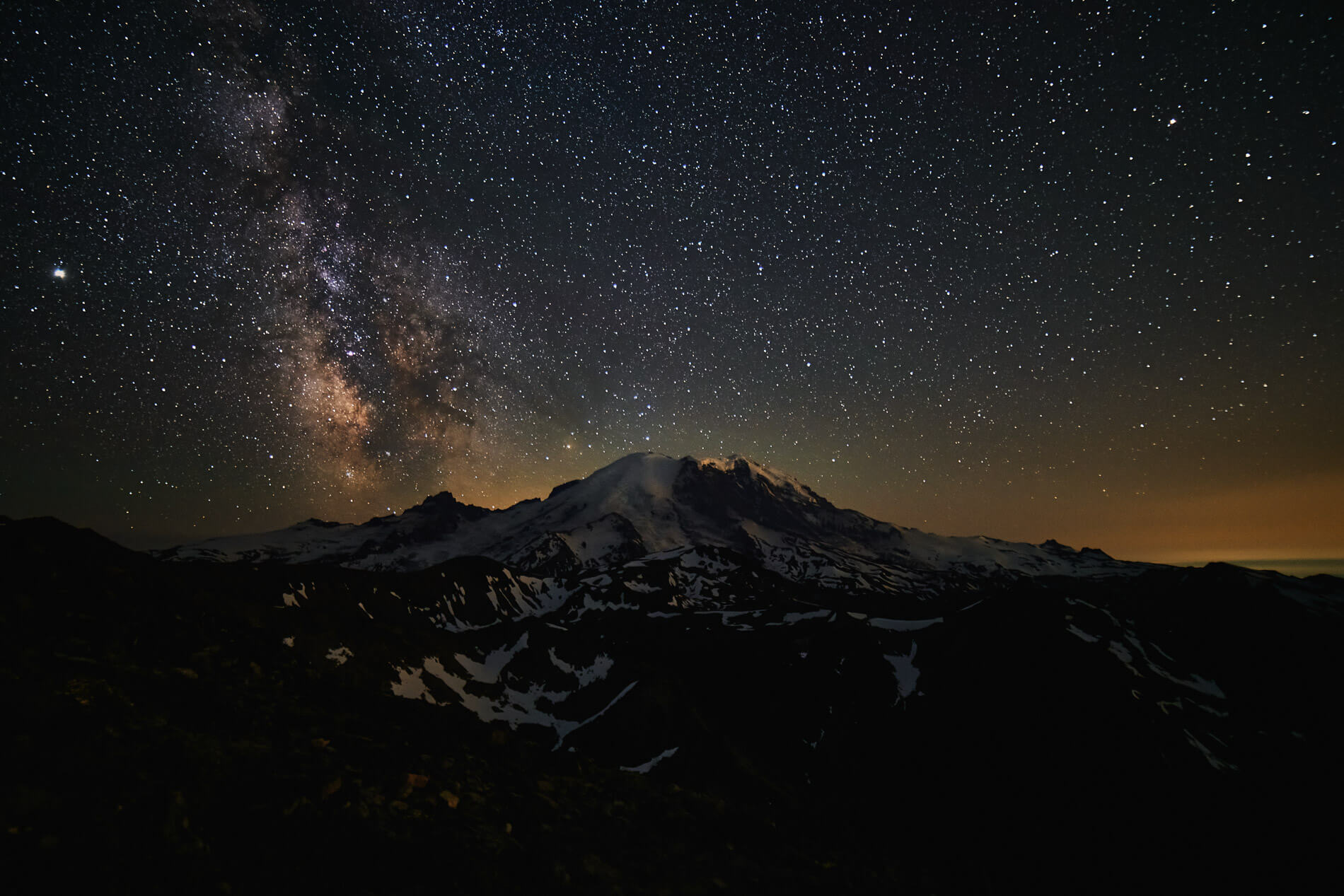
While many head to Mount Rainier and Mount St. Helens (whose Johnston Ridge Observatory is slated to reopen in spring 2027), these destinations can be extremely popular. Below you’ll find top-notch places for seeing meteor showers, comets, the Milky Way, and constellations. The Washington Trails Association also keeps a running list of stellar trails and parks for stargazing in Washington State.
Where to go Stargazing in Washington State
Steamboat Rock State Park
In the vast desert expanse of North Central Washington, Steamboat Rock State Park cozies up to Banks Lake south of Coulee Dam. Surrounded by rimrock and sagebrush, this spot is rumored to have some of the best stargazing in Washington State. With campsites and cabins, it’s an easy spot to stay overnight and enjoy the views. Just a 45-minute drive east is Jameson Lake, the new location for the annual Washington State Star Party, where hundreds of people gather to witness and celebrate phenomena of the night sky. The celebration usually takes place in July or August on the week closest to new moon.
Goldendale
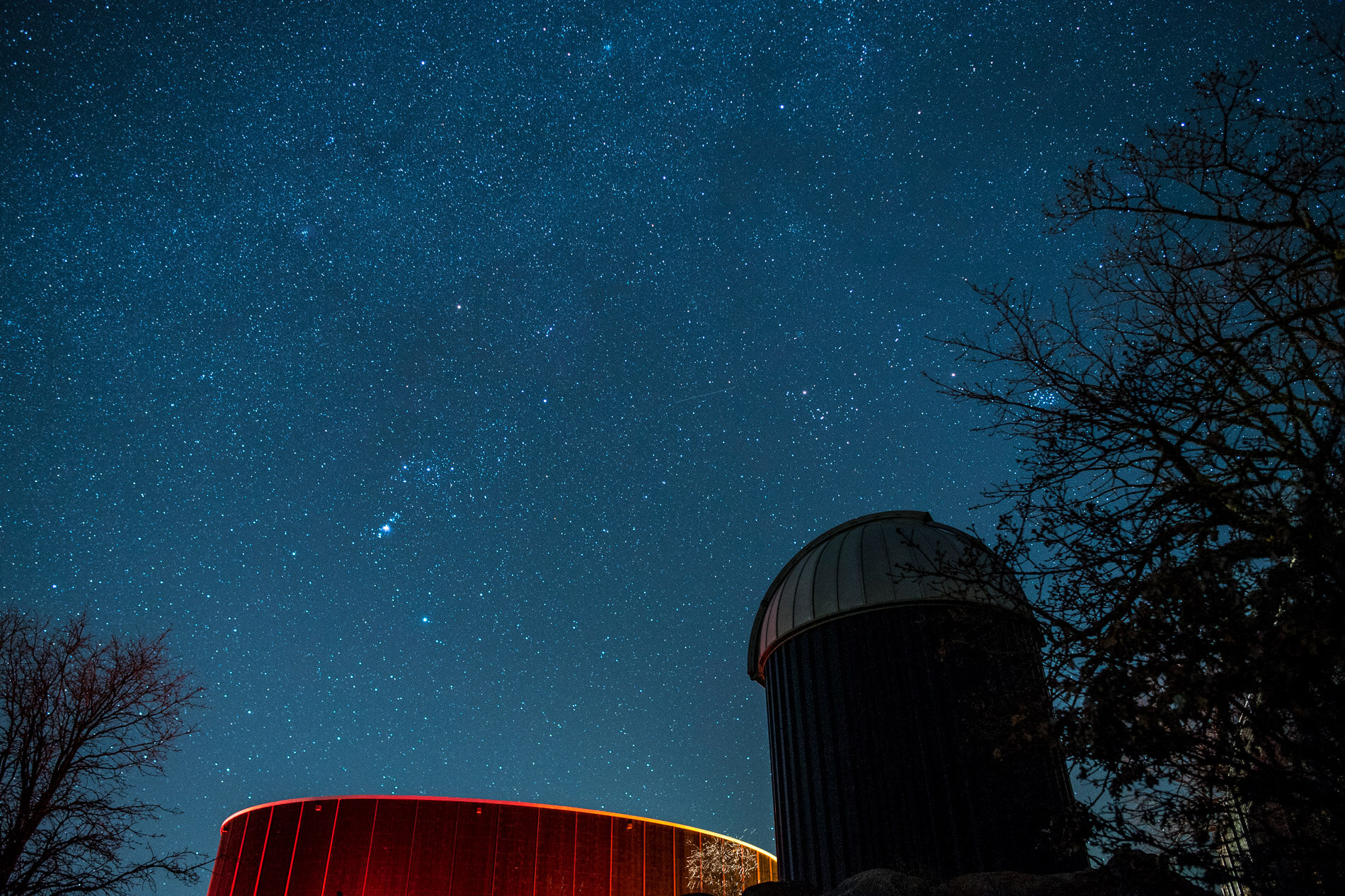
Located on a hilltop above the Columbia River Gorge, the Goldendale Observatory attracts astronomy aficionados from far and wide. Their year-round programming utilizes an amphitheater, observatory, and several phenomenal telescopes, including one of the largest in the county. Visitors can choose from two programs (reservations are required): a daytime solar program or an evening program. Just north of Goldendale off Highway 97, Brooks Memorial State Park is a great place to camp and a recognized dark sky location. Both spots require a Discover Pass. Farther south along the Columbia River, the Maryhill Museum of Art hosts an annual summer campout event called Starry Night at the Museum, where astronomers share their telescopes and participants can learn about the cosmos.
Also See: Gorge to Coast Road Trip
Methow Valley
The sky above the Methow Valley has a reputation for being one of the darkest spots for stargazing in the country, with stellar views of the northern lights. For those wanting luxurious accommodations and fabulous viewing, look no further than Sun Mountain Lodge, which periodically hosts astronomers with telescopes for interpretive evenings on the lawn. Those preferring to camp can head eight minutes east of Winthrop to Pearrygin Lake State Park, which features a pristine high-desert lake and has spectacular nighttime views. For dark sky events in the area, check with Methow Dark Sky Coalition, which regularly hosts star parties, presentations, and the Milky Way Social Club Beer and Blabs.
Okanogan-Wenatchee National Forest
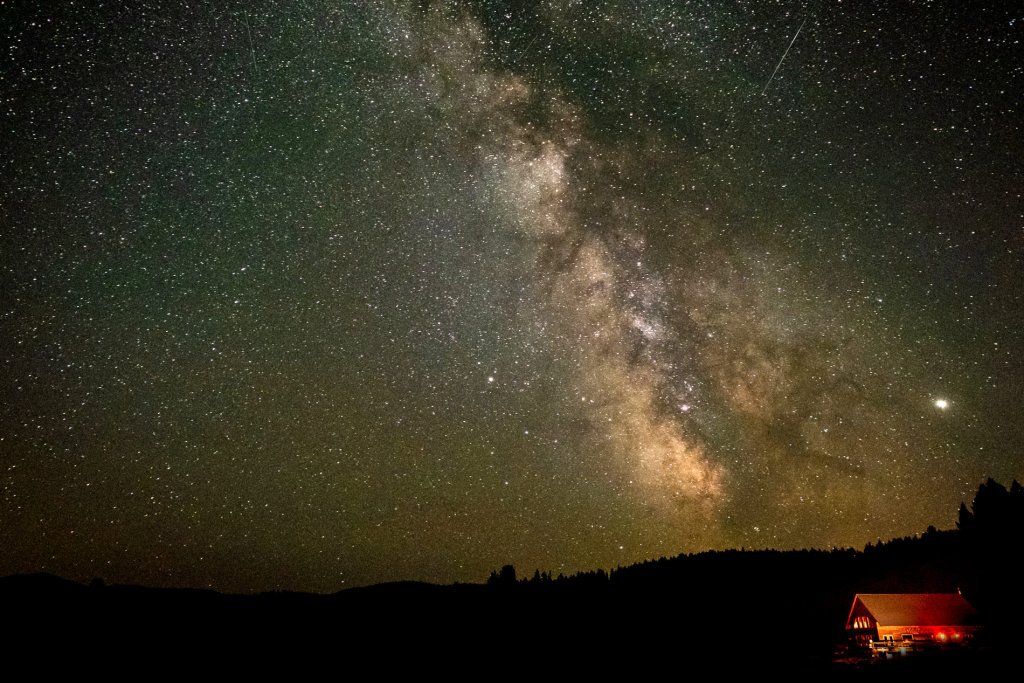
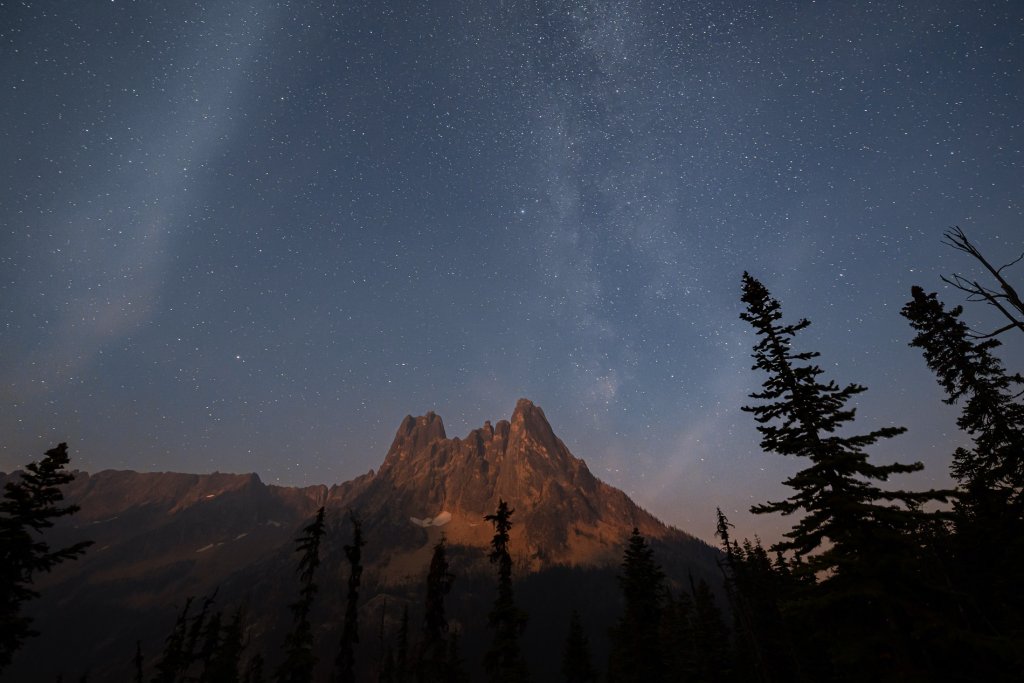
Along the eastern slopes of the Cascade Mountain Range, Okanogan-Wenatchee National Forest boasts more than 3 million acres, providing ample opportunities for those seeking dark skies in Washington. Camp at Lake Wenatchee State Park, which sits on a glacier-fed lake north of the Bavarian-style town of Leavenworth and see little light pollution. Every summer, local astronomers and stargazers head to Lake Wenatchee South Park Beach for the ranger-led Astronomy on the Lake Program. Attendees bring blankets, lawn chairs, and questions about the cosmos, our solar systems, and supernovae. The group uses telescopes and other astronomy tools to explore the night sky. Walk-in visitors are welcome to join, but calling in advance is always appreciated. While the programming is free, a Discover Pass is required.
Also See: Common Permits & Passes
Spokane Area
Southwest of Spokane, the 9,000-acre Fishtrap Recreation Area beckons astronomers thanks to far-flung forests, shrub steppe, and grasslands that provide remarkable visibility. The Spokane Astronomical Society organizes regular star parties here and is known for teaching members to build their own telescopes. If you happen to pass through Spokane on a stargazing journey, check out the Spokane Falls Community College’s Planetarium for public presentations (closed during summer).
Olympic National Park
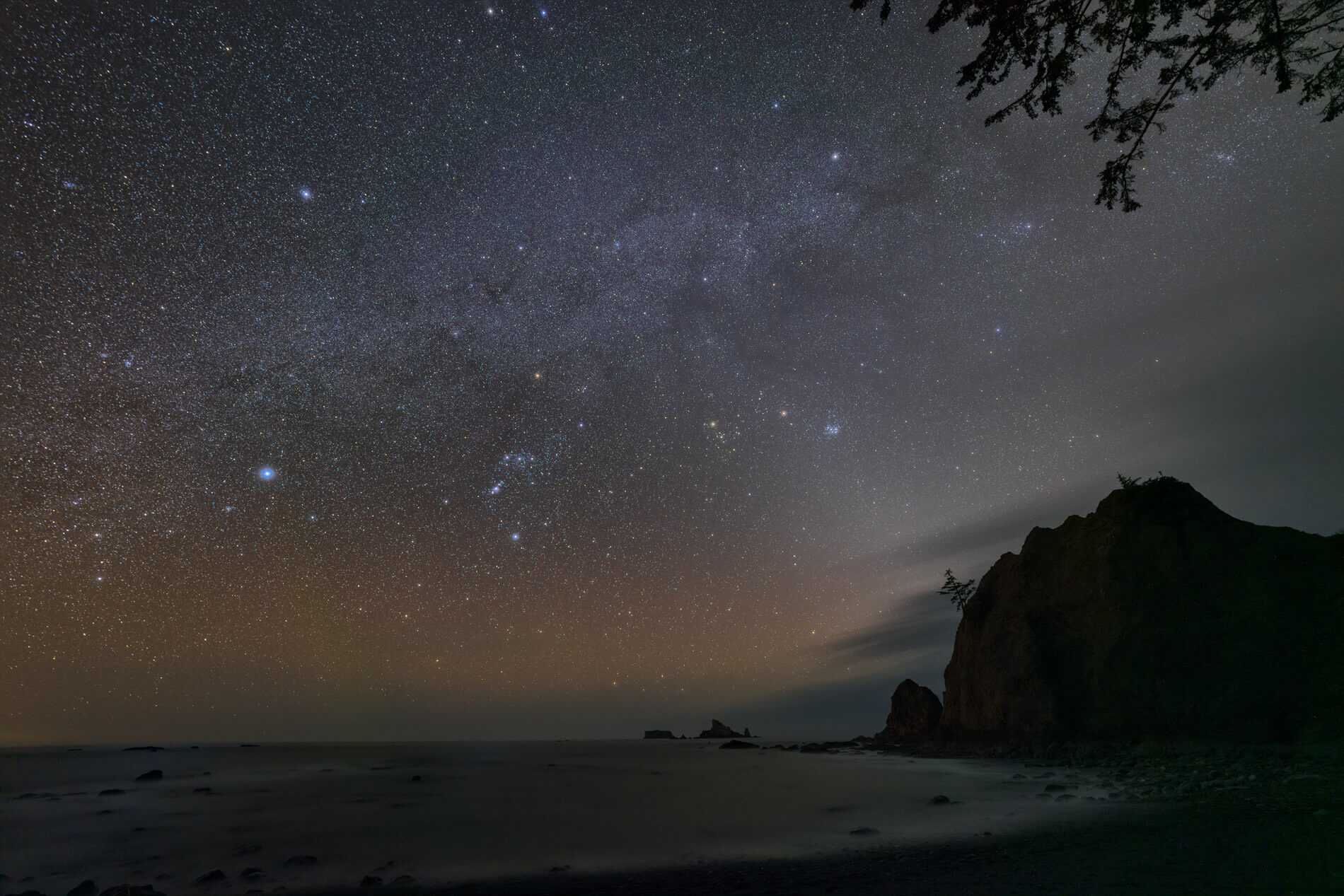
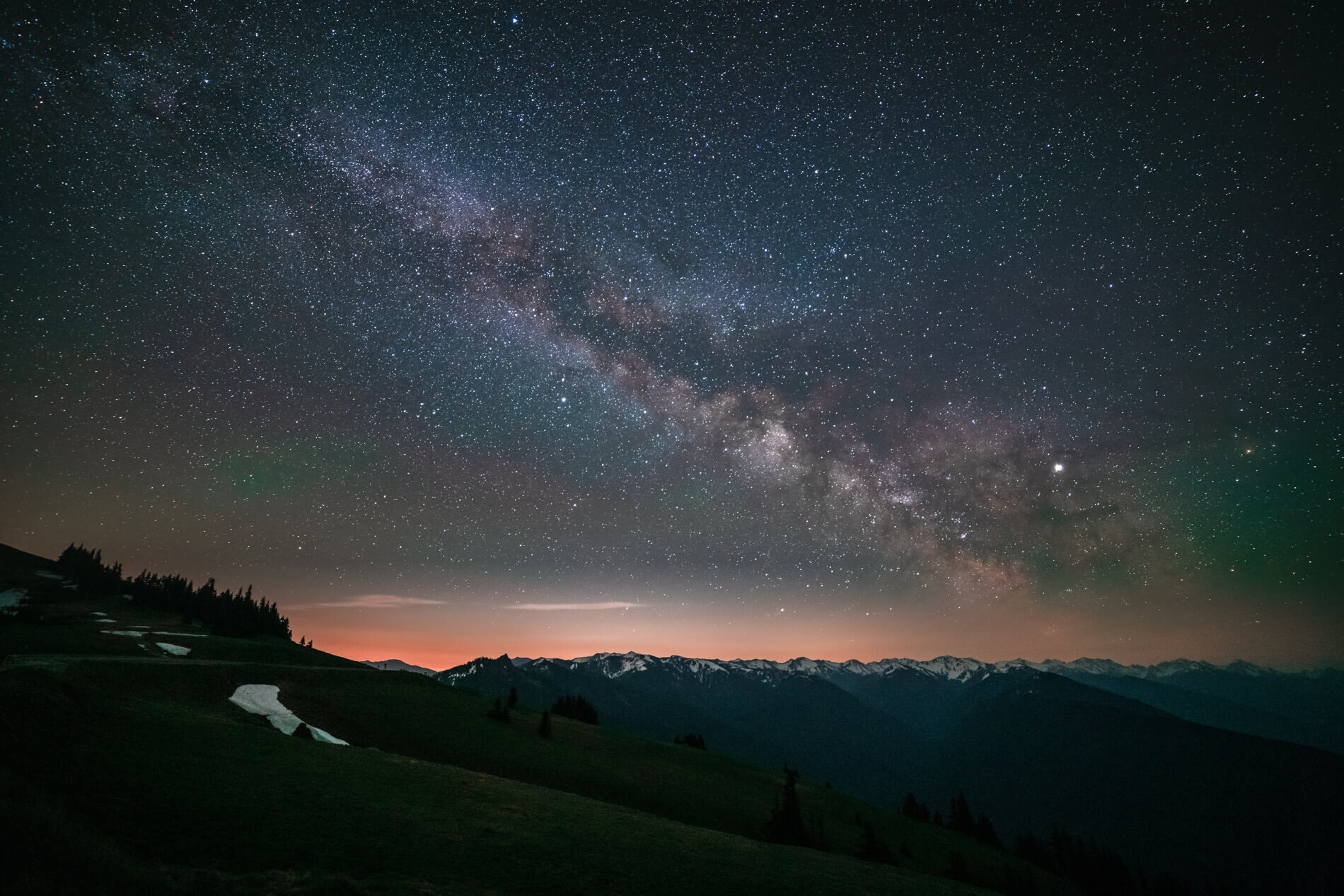
About 95% of Olympic National Park is designated as wilderness, leading to minimal human-caused light pollution. On this rainforested peninsula, the summer dry season is the ultimate time for stargazing in Washington thanks to clear skies. The peninsula’s wild beaches are ideal places for unobstructed viewing. Third Beach is a plum spot to stake a telescope. The 3.6-mile round-trip hike to the beach makes for an especially secluded and magical experience (don’t forget to check the tide tables beforehand). Further inland on the north side of the park at Hurricane Ridge, visitors can join a Master Observer for astronomy and stargazing via telescopes for close-up views. Both places require a National Park Pass.
Mount Baker Wilderness
The Mount Baker Wilderness in Mt. Baker-Snoqualmie National Forest borders parts of North Cascades National Park and boasts clear dark skies. About 90 minutes from Bellingham, one of the most popular and renowned spots for stargazing in Washington State is Artist Point on Mount Baker, which is also famous for its sweeping daytime views of glaciated mountain peaks. Head up the road to Heather Meadows for the same views but slightly fewer crowds. In the area, the Whatcom Association of Celestial Observers holds regular star parties.
Also See: Visiting North Cascades National Park
Palouse Falls State Park
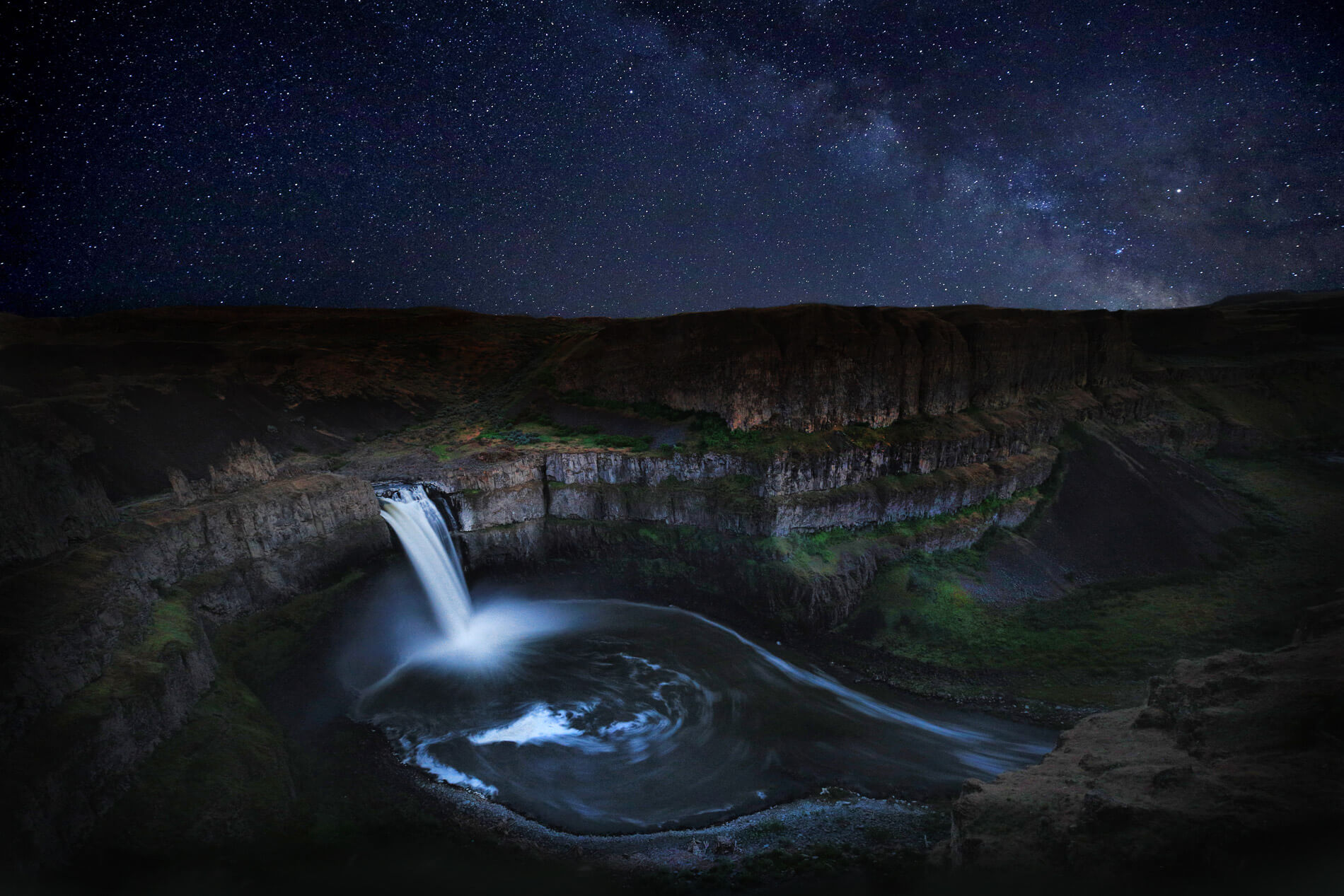
Palouse Falls State Park is situated in the vast desert between Tri-Cities and Pullman, making it an ideal spot to escape the lights of civilization. The park centers around a 200-foot waterfall on the Palouse River that plunges off a steep basalt canyon wall. Between the roar of the waterfall and the crystal clear night sky, the area has some of the most epic stargazing in Washington State. Astrophotographers come from far and wide for the shot of the Milky Way over the falls. The trails to the base of the waterfall are permanently closed, but there are spectacular views from the overlook. Parking is limited. Just 8 miles south at the confluence of the Palouse and Snake rivers is an alternative spot, Lyons Ferry State Park. It has fabulous dark-sky viewing with fewer crowds. A Discover Pass is required at both spots.
Also See: Eastern Washington Road Trip
Sun Lakes-Dry Falls State Park
Between Coulee City and Soap Lake in Washington’s eastern high desert, Sun Lakes State Park often flies under the radar. During the day, visitors can play golf at Vic Meyers Golf Course within the park, hike the park’s 15 miles of trails, or paddle the numerous lakes. Once the sun sets, the darkness of the night sky brings thousands of stars into relief. The overlook at the visitor’s center is a great spot to stargaze, and the campground makes it a convenient place to stay the night. A Discover Pass is required for day use.
Stargazing near Seattle
Although city lights make stargazing difficult in Seattle, the incredibly powerful telescopes at the Theodor Jacobsen Observatory at the University of Washington allow visitors to peer far into the cosmos. During evening programming from April through September, students and faculty speak to visitors before volunteers from the Seattle Astronomical Society point telescopes skyward. At the observatory, check out vintage brass astronomy equipment, like an ornate 19th-century brass telescope once used to calibrate clocks. Across from Seattle on Bainbridge Island, Battle Point Observatory holds open houses and other events for those looking to learn more about astronomy.
About the Author
Ellee Thalheimer is a freelance writer and guidebook author based in the Pacific Northwest who has contributed to publications like Lonely Planet Guidebooks, Alaska Airlines Magazine, and Adventure Cyclist Magazine. When she can’t get outside, she writes fiction, drinks local IPAs, and perfects her handstands.
Featured image: Dennison / Adobe Stock
